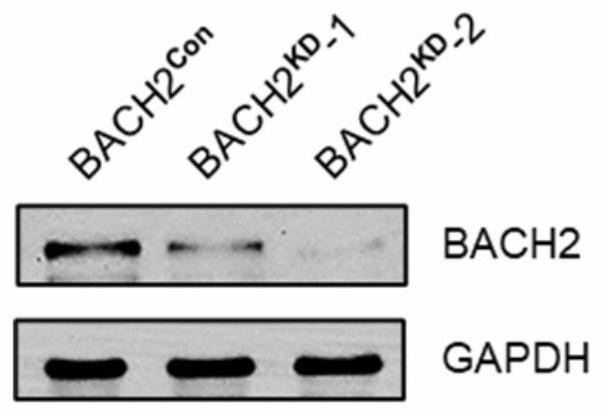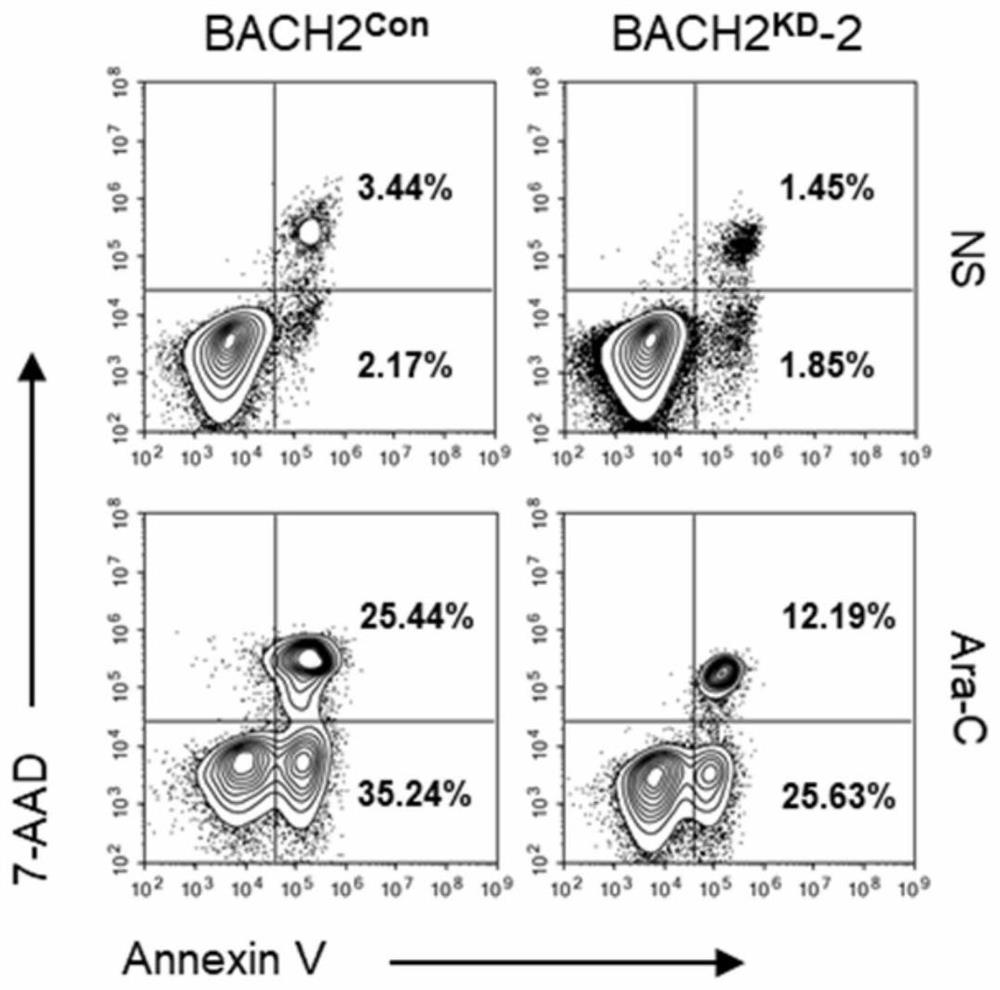Application of cytarabine and proto-oncoprotein c-FOS inhibitor in preparation of product for treating leukemia
A cytarabine and leukemia technology, applied in the field of biomedicine, can solve the problems of high degree of tumor malignancy, recurrence, and drug resistance in children, and achieve the effect of overcoming drug resistance, increasing sensitivity, and reducing drug resistance.
- Summary
- Abstract
- Description
- Claims
- Application Information
AI Technical Summary
Problems solved by technology
Method used
Image
Examples
Embodiment 1
[0044] Embodiment 1, the preparation of test cell and culture medium
[0045] 1. Collection, collection and processing of clinical samples
[0046] 1. Collection of clinical specimens
[0047] Bone marrow specimens from two newly diagnosed children with leukemia who were hospitalized in Beijing Children's Hospital during November 2018 were collected.
[0048] 2. Diagnosis and classification of newly diagnosed children with leukemia
[0049] Two children with leukemia were diagnosed as common B-ALL (common B lineage ALL, c-B-ALL) by clinical, morphological, cytochemical staining and immunological methods. Diagnosis and classification criteria were in accordance with national unified standards (Suggestions for Diagnosis and Treatment of Pediatric Acute Leukemia. Chinese Journal of Pediatrics. 1999,137(5):305-307). The multiplex nested reverse transcription-PCR method was used to detect 29 genes caused by chromosomal structural aberrations in the bone marrow specimens of the a...
Embodiment 2
[0093] Embodiment 2, the drug resistance detection of test cell and culture medium
[0094] 1. Detection of the apoptosis level of the stably transformed recombinant leukemia cells treated with chemotherapeutic drugs
[0095] Take the stably transformed recombinant leukemia cell Nalm-6 / BACH2 established in step 2 of Example 1 KD -2 with Nalm-6 / BACH2 Con As the test cells, they were cultured in 6-well plates containing 3 mL of RPMI-1640 medium containing 10% FBS, and the cell density was 5×10 5 To each well, add 20 nM of cytarabine (Ara-C), a chemotherapy drug commonly used in clinical practice for acute lymphoblastic leukemia (ALL), and normal saline (NS), harvest the cells after 48 hours, and analyze the cells by flow cytometry Apoptosis detection. The apoptosis detection kit is the 7-AAD / Annexin V apoptosis kit from BD Biosciences, USA. The result is as figure 2 shown.
[0096] The results showed that after treatment with Ara-C, the recombinant leukemia cells Nalm-6 / B...
Embodiment 3
[0103] Example 3, detection of leukemia cell survival rate and drug combination index treated with chemotherapy drugs
[0104] 1. Detection of the survival rate of leukemia cells treated with chemotherapy drugs
[0105] 1. Take the mononuclear cell samples Pt1 and Pt2 of the bone marrow of two cases of children prepared in the first step of Example 1, and the stable transfer recombinant leukemia cell line Nalm-6 / BACH2 established in the second step KD -2 and Nalm-6 / BACH2 Con As the test cells, they were cultured in 1 mL of 24-well plate containing common medium, and the cell density was 5×10 4 One / hole, each kind of test cell is divided into the following treatment groups according to the difference of adding drugs:
[0106] Treatment group 1: 20 nM cytarabine Ara-C.
[0107] Treatment group 2: 20 nM cytarabine Ara-C + 5 μM nordihydroguaiaretic acid (NDGA).
[0108] Treatment group 3: 20 nM cytarabine Ara-C + 5 μM curcumin.
[0109] Treatment group 4: 200 nM cytarabine Ar...
PUM
 Login to View More
Login to View More Abstract
Description
Claims
Application Information
 Login to View More
Login to View More - R&D
- Intellectual Property
- Life Sciences
- Materials
- Tech Scout
- Unparalleled Data Quality
- Higher Quality Content
- 60% Fewer Hallucinations
Browse by: Latest US Patents, China's latest patents, Technical Efficacy Thesaurus, Application Domain, Technology Topic, Popular Technical Reports.
© 2025 PatSnap. All rights reserved.Legal|Privacy policy|Modern Slavery Act Transparency Statement|Sitemap|About US| Contact US: help@patsnap.com



